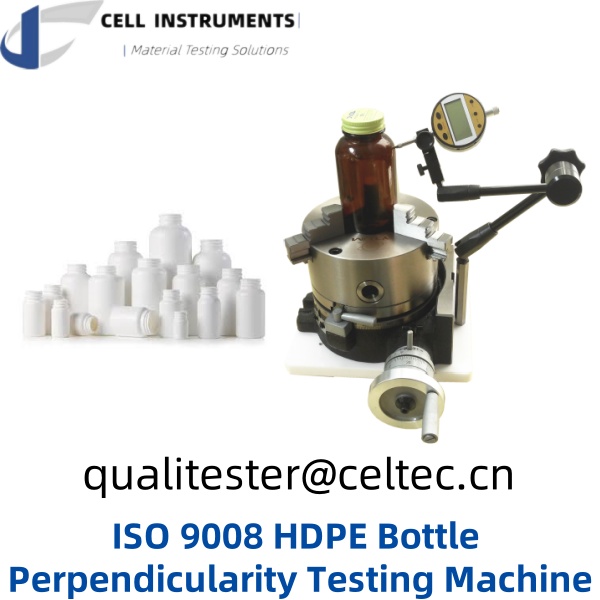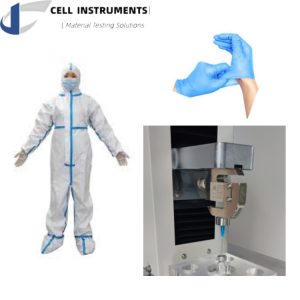HDPE (高密度ポリエチレン) ボトルの品質と完全性を確保することは、包装、食品および飲料、医薬品などの業界にとって非常に重要です。この品質管理プロセスの重要な側面の 1 つは、ボトルの垂直軸の真の垂直位置からの偏差を測定する HDPE ボトル垂直度テストです。この記事では、ISO 9008 標準に準拠してこのテストを実施し、精度、一貫性、コンプライアンスを確保するためのベスト プラクティスについて説明します。
HDPEボトルの垂直性テストを理解する
HDPE ボトルの垂直度テストとは何ですか?
HDPEボトルの垂直性テストは、品質管理の手段として、 ボトルが完全に直立しているかどうかを判断する. このテストでは、ボトルの安定性と内部の製品の完全性に影響を与える可能性のある傾きがないことを確認します。
ボトルの垂直性の重要性
垂直性はいくつかの理由で重要です:
- 安定性: ボトルが簡単に倒れないようにします。
- シールの完全性: キャップが適切にフィットするようにすることで漏れを防止します。
- 包装効率: 効率的な梱包と輸送を可能にします。
- 美的魅力: 棚の上で均一な外観を維持します。
ISO 9008規格への準拠
ISO 9008の概要
ISO 9008 は、品質管理システムの要件を規定する国際規格です。製品が顧客および規制要件を一貫して満たすことに重点を置いています。包装業界にとって、これは材料と容器の完全性に関する厳格な基準を遵守することを意味します。
ボトル試験における ISO 9008 への準拠
ISO 9008 への準拠には以下が含まれます。
- 正確な測定: 正確な垂直度測定を保証します。
- 一貫したテスト手順: 標準化されたテスト方法に従います。
- ドキュメントとレポート: テスト結果の詳細な記録を保持します。
HDPE ボトルの垂直性テストのベスト プラクティス
1. 適切なサンプルの準備
- 清潔さ: ボトルが清潔でゴミがないことを確認してください。
- 温度制御: 材料の膨張や収縮を避けるため、一定の室温でテストを実施してください。
2. 機器のセットアップと校正
- 安定した表面: テスターを安定した水平な面に設置します。
- 較正: 精度を確保するために定期的に機器を校正してください。
3. テストの実施
- ボトルの配置: ボトルをテスターに固定し、正しく位置合わせされていることを確認します。
- 測定プロセス: テスターを起動して、複数のポイントで垂直性を測定します。
- データ収集: 結果を正確に記録します。
4. 結果の解釈と分析
- 偏差許容範囲: ISO 9008 規格に基づいて許容される偏差限度を定義します。
- 一貫性チェック: 一貫性を確認するために複数のテストを実行します。
5. 試験装置の定期的なメンテナンス
- 定期検査: テスターの摩耗や損傷を確認します。
- クリーニング: 測定誤差を防ぐために、機器を清潔に保ってください。
推奨機器: Cell Instruments PER-01 ボトル垂直度試験機
Cell Instruments は、高品質の材料試験機器を専門に扱っています。PER-01 ボトル垂直度試験機は、正確な測定を実現し、ISO 9008 規格に準拠するように設計されています。主な機能は次のとおりです。
- 調整可能なプローブ: 簡単かつ正確な位置合わせが可能です。
- 卓越した精度: 非常に正確な測定を提供します。
- 一貫したローテーション: さまざまなポイントで均一なテストを保証します。
- データのエクスポート: データ管理を強化するために、PC Excel へのオプションのデータエクスポートを提供します。
よくある質問
1. HDPE ボトルの垂直性テストの目的は何ですか?
このテストでは、HDPE ボトルが傾くことなく直立していることを確認します。これは、安定性、密閉性、パッケージング効率にとって非常に重要です。
2. Cell Instruments PER-01 テスターはどのようにして精度を保証しますか?
PER-01 は調整可能なプローブと一貫した回転を特徴とし、正確で均一な測定を実現します。
3. ISO 9008 規格に準拠することの利点は何ですか?
コンプライアンスにより、製品の品質、顧客満足度、規制遵守が保証され、コンプライアンス違反の問題のリスクが軽減されます。
4. 試験装置はどのくらいの頻度で校正する必要がありますか?
正確性を確保するために、定期的に、理想的には各テストセッションの前に校正することをお勧めします。
5. PER-01 テスターを特定のニーズに合わせてカスタマイズできますか?
はい、Cell Instruments は、さまざまな業界の独自のテスト要件を満たすカスタマイズ オプションを提供しています。
これらのベスト プラクティスに従い、Cell Instruments PER-01 ボトル垂直性テスターなどの高度なテスト機器を利用することで、HDPE ボトルが最高の品質基準を満たし、ISO 9008 に準拠していることを保証し、製品の完全性と市場での魅力を高めることができます。



